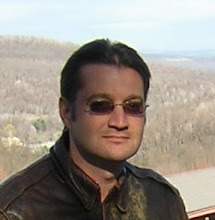The 46-page file is remarkable for its lack of context. It does not begin with a rationale for the espionage that began on March 14, 2005. It does not state who ordered it or why. It does not state the names of the officers involved in the investigation or their superiors. At the top of the first page, it merely states that the first entry is a “Supplement to Intelligence Report Initiated by Analyst Sparwasser.” So on March 13th, there is no spying. On March 14th, suddenly there is. Or so the files of the Secret Police would have us believe.
The first entry is a report by an agent who attended while “undercover” a meeting of activists in Takoma Park about death-row inmate Vernon Evans. The spy’s report is humdrum: the meeting attendees discussed putting out flyers, going to other meetings and events and soliciting donations. The report contains no evidence that violent acts, crime or terrorism was discussed by anyone at the meeting. Nevertheless, the report states, “After the meeting, [redacted] set up a covert e-mail account, was accepted on the Maryland Campaign to End the Death Penalty Yahoo List Serve and also contacted a man who attended the Takoma Park meeting about attending future meetings.” Accepted as a confidant by the anti-death penalty group, the spy had established a regular channel of information that would enable continuous monitoring and reporting on the group to superiors.

The Post article discusses an individual named “Lucy” who was later suspected by the activists. Was “Lucy” the spy writing these reports? It is hard to tell from the documents, which redact any mention of an officer’s name. The reports could have been written by one spy, two spies or many spies. The Secret Police protect their own identities just as they track the rest of us.
The very next day, a spy attended another organizational meeting in Baltimore. There the sisters of inmate Vernon Evans, convicted of murder and languishing on death row, discussed their communication strategy with politicians and the press. They did not discuss bombing, or shooting, or subversion, or terrorism against the government. They only discussed how to save their brother from being put down by the state. The spy reports, “The goal which many of the attendees stated was a moratorium on executions until a study promised by Governor Ehrlich about racial disparity in the judicial system was completed.” Apparently, that was enough to justify further spying and the espionage continued.

Interestingly, the report states, “Further intelligence will be added as it is developed. The above information was relayed to MSP Executive Protection Section and Baltimore City Police Intelligence Section on 3/16/05 by [redacted].” Did the Secret Police really worry that the anti-death penalty activists posed a physical threat to Governor Ehrlich?
Two more reports follow on meetings attended by the spy “in a covert capacity:” a town hall meeting in Takoma Park and an anti-death penalty rally at Baltimore’s Supermax facility. The spy named as many attendees as he or she could identify, including “exonerated inmate Shujaa Graham,” “Mike Stark, a socialist and organizing member of the Maryland Campaign to End the Death Penalty” and Vernon Evans’ “sister, Gwen Bates.” The spy wrote, “Each speaker mentioned the April 9th rally at Supermax but no one advocated any kind of violence or disobedience.” But still the Secret Police persisted. After all, at any gathering of socialists, exonerated inmates and liberal activists, violence would be the inevitable result. It was just a matter of taking more time, gaining more trust, working into the inner circle of the activist leadership and their nefarious true purpose would be exposed.


Finally, the spies’ persistence would be rewarded. Because attending the Supermax rally was none other than Max John Obuszewski, a person who would quickly become the central figure in the investigation. We will find out how the Secret Police dealt with Obuszewski in Part Two.


No comments:
Post a Comment